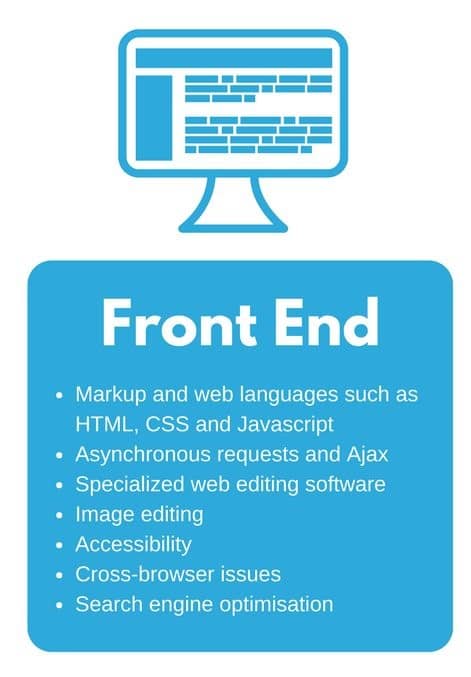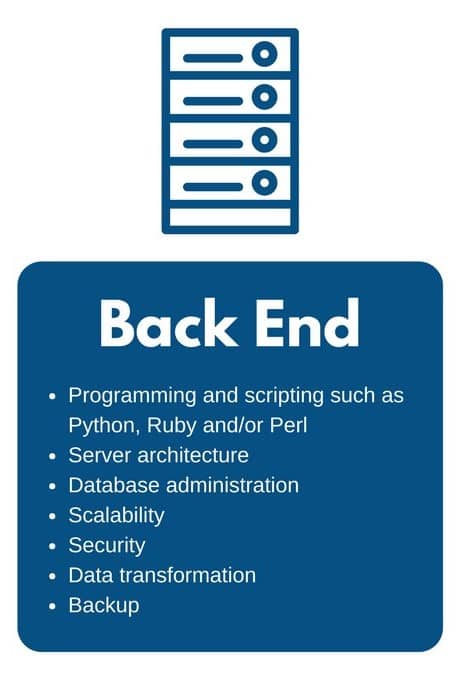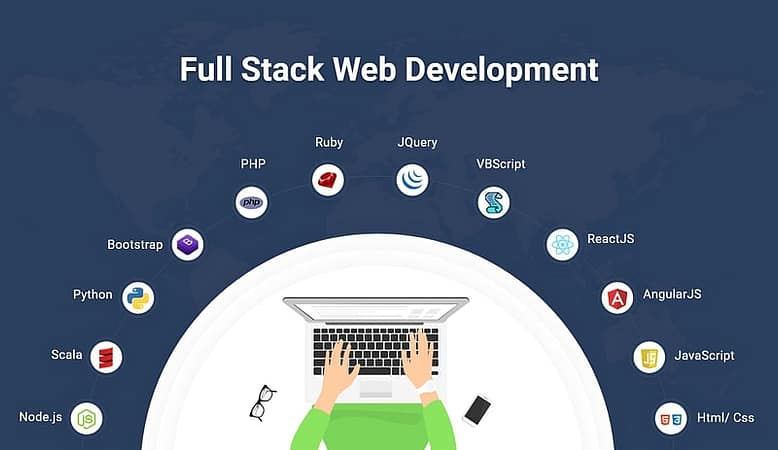Full Stack Web Development for E-commerce Websites
One of the best revenue-generating and delivering services for any IT company is full-stack web development for e-commerce websites.
In the fast-paced digital epoch, we find ourselves immersed in, the omnipresence of e-commerce has seamlessly woven itself into the fabric of our quotidian existence.
Irrespective of whether one seeks to procure the latest technological marvel, sartorial adornments to enhance personal style, or even the most mundane of consumables like groceries, the digital marketplace presents itself as an inexhaustible emporium catering to diverse desires.
Yet, lurking behind the virtual facades of these e-commerce behemoths lies an intricate web development tapestry, and it is the full-stack developers who, akin to virtuoso architects, endeavor to construct and perpetually fortify these sprawling digital marketplaces.
Likewise, full-stack web development for e-commerce websites is one of the best income-generating and providing services for any IT company.
The sphere of full-stack web development constitutes a multidimensional and multifaceted discipline, one that necessitates proficiency across the vast expanse of both the front-end and back-end domains of a website or web application.
In the context of e-commerce, the stakes are raised to a zenith, as these digital emporiums are tasked with the Herculean feat of delivering a user experience that is nothing short of ethereal, whilst concurrently shouldering the burden of secure financial transactions and the management of voluminous reservoirs of data.
Within the confines of this article, we embark on an odyssey to plumb the depths of full-stack web development.
Specifically tailored to the milieu of e-commerce, and in so doing, we shall unfurl the cardinal constituents and superlative practices requisite for triumph in this beguiling domain.
Works Done
User Interface (UI):
The visage of an e-commerce enclave, its front-end, is the interface that communes with the user, a digital realm encompassing design, layout, navigation, and all that traverses the visual contour of the digital terrain.
It is within this crucible that the art of crafting an enthralling, user-friendly UI unfurls its profound significance.
Back-End Infrastructure:
The sinews and sinews of the operation, the back-end, constitute the engine that propels an e-commerce citadel.
It orchestrates databases, user validation, inventory management, transaction orchestration, and the delicate ballet of secure payments.
Similarly, this sanctum sanctorum stands as the linchpin for the functional coherence and fortification of the digital fiefdom. For Full-stack web development for e-commerce websites, this part is important.
Database Management:
In the crucible of e-commerce, torrents of data flow incessantly, from the granularities of product minutiae to the tapestry of user-profiles and the annals of transactional sagas.
A robust leviathan of database management becomes an indispensable vassal for the efficacious organization and alacritous retrieval of these voluminous troves.
Full-stack web development is essential for creating feature-rich e-commerce websites that provide seamless user experiences and robust backend functionality.
Security:
In the hallowed sanctum of e-commerce, the specter of security looms colossally.
Given the inherently sensitive nature of financial transactions and personal data, full-stack architects must espouse the mantle of guardianship, invoking the totems of encryption, user authentication, and vulnerability scrutiny to safeguard both citadel and denizen.
Scalability:
E-commerce arenas often oscillate through the maelstrom of capricious traffic, particularly during epochal sales and promotional surges.
To avert the abyss of downtime or the bog of sluggish performance, the citadel must be endowed with the ability to burgeon, and therein lies the sine qua non of scalability.
Now, let us disassemble full-stack web development for e-commerce manors into its constituent fragments:
Type of Web Development Listed Here.
Front-End Development

HTML, CSS, and JavaScript:
These luminary constituents form the bedrock upon which the edifice of front-end development rests.
HTML bequeaths the scaffolding, CSS assumes the mantle of stylistic arbiter, and JavaScript, the necromancer, breathes life into the interface, casting the spell of interactivity.
Responsive Design:
Ensuring that the digital citadel resonates harmoniously and with grace across the diverse orchestra of devices—be it the stately desktop, the versatile tablet, or the ubiquitous mobile phone—constitutes a sacrosanct decree. Responsive design doctrines are the vade mecum for accomplishing this harmonious resonance.
UI/UX Design:
In consort with the high priests of UI/UX, full-stack adepts must partake in a sacerdotal synergy, fashioning interfaces that are not just intuitive but also aesthetically resonant.
This entails the arcana of wireframing, prototyping, and the liturgy of user testing, wherein the eldritch alchemy of user experience is refined.
Back-End Development

Server-Side Programming Languages:
Proficiency in the pantheon of server-side tongues—be it Python, Ruby, Java, PHP, or Node. js—is a sine qua non. These vernaculars form the bedrock for receiving petitions, conducting data orchestration, and presiding over the citadel’s hinterlands.
Moreover, full-stack web development is important for creating feature-rich e-commerce websites that provide seamless user experiences and robust backend functionality.
Web Frameworks:
The aegis of frameworks such as Ruby on Rails, Django, Laravel, or Express.js proffers a structured approach to erecting the foundation of the citadel’s back end.
These monoliths furnish pre-forged modules and compendiums for common rituals, including the initiation of user validation and communion with the sanctified databases.
Database Management:
The amulets of SQL and NoSQL repositories, such as MySQL, PostgreSQL, MongoDB, or Cassandra, serve as the repositories for sacrosanct scrolls of data.
Here, the craftsmen of full-stack must sketch elegant cartographies for databases and temper their queries to ensure the swift retrieval of intelligence.
API Integration:
E-commerce provinces often necessitate communion with extramural deities, with entreaties to payment gateways, shipping conduits, and social pantheons.
Similarly, full-stack luminaries must deftly navigate the sylvan labyrinth of APIs to usher in these celestial unions. For Full-stack web development for e-commerce websites, this part is important.
Security and Payment Processing
Secure Socket Layer (SSL):
To enshroud the transactional communion between the pilgrim’s browser and the citadel’s server in an impenetrable cloak of confidentiality and integrity, the insignia of SSL certificates must adorn the portals.
User Authentication:
The incantation of secure user authentication rites, be it through the invocation of OAuth or the imbuement of JWT, forms the ramparts safeguarding both the sanctum of the user and the treasure troves of data.
Payment Gateway Integration:
The communion with payment gateways, such as PayPal, Stripe, or Square, invokes the archetype of secure incantations to preside over the sacrosanct rituals of financial transactions
Scalability and Performance
Caching:
The evocation of caching incantations bestows a boon upon the citadel’s performance. By enshrining frequently invoked data in the pantheon of memory, the querulous litanies to the database are diminished.
Content Delivery Networks (CDNs):
The apparition of CDNs metamorphoses the content into spectral phantoms, ubiquitously distributed across the matrix of servers.
Likewise, this ghostly dispersion not only reduces latency but augments the tempo of load times. For, Full Stack web development for e-commerce websites this part is important.
Load Balancing:
The diffusion of ingress pilgrims across a legion of servers guarantees a perennial banquet, assuring high availability and scalability, even amidst the tempestuous tides of traffic surges.
Testing and Deployment
- Unit Testing: The liturgy of penning and executing unit tests, both for the interface’s façade and the sanctified recesses of the back end, serves as the sibylline whispers that reveal the concealed flaws, permitting their exorcism in the nascent stages of development.
- Continuous Integration/Continuous Deployment (CI/CD): The pipelines of CI/CD infuse the ritual of automation into the mosaic of testing and deployment, ensuring the reliability and consistency of code metempsychosis.
Moreover, in the intricate tapestry of full-stack development, there exists a trinity of layers, each a stratum in the grand edifice of digital creation.
Behold, the triad: the database layer, sentinel of data’s sanctum; the business logic layer, guardian of validation’s sanctity; and the presentation layer, the front-line herald of user interface’s symphony.
Yet, to unravel the mystique of full-stack development, one must ponder the question: Is it a venture fraught with daunting complexity? The answer, shrouded in the mists of subjectivity, dances upon the precipice of comprehension.
For, lo, the full-stack developer, a paragon of duality, straddles the realms of both front-end and back-end conjuration.
The non-technical neophyte, desiring to tread the path to full-stack mastery, may traverse this daunting bridge, but time shall be their most stringent arbiter.
Within the esoteric taxonomy of full-stack developers, one may discern avatars of diversity. They are web artisans, ensconced in the domain of HTML and CSS, yet, like Protean deities, they metamorphose into creators of browser incantations with JavaScript, jQuery, Angular, or Vue.
Simultaneously, they wield the sorcery of server programming, sculpting the ethereal with Node.js, PHP, ASP, and languages unspoken.
Furthermore, the full-stack framework is a chimera of tools encompassing the entirety of web creation.
From the siren call of the front-end user interface to the cryptic depths of the back-end database, this framework weaves a tapestry where every thread holds a vital purpose.
Can one ascend this mystical ladder in a mere three moons, becoming a full-stack acolyte? The answer, shrouded in hope and ambition, resounds with potential.
For those who dedicate heart and soul, eschewing all distractions, the path to full-stack revelation may indeed be traversed in the span of three turns of the celestial sphere.
Begin the journey, embrace both front and back, and when the hourglass’s last grain falls, you shall stand ready, a full-stack adept, prepared to weave your digital spells and chart your destiny.
Conclusion
Full-stack web development for e-commerce citadels is a vocation bespeaking of dynamism and challenge, a tapestry that craves the embrace of a diverse skill set.
From sculpting captivating front-end visages to fortifying the hinterlands with robust and secure architectures, full-stack artisans partake in a pivotal pas de deux, sculpting the destinies of e-commerce realms.
As the ever-mutating e-commerce landscape continues its ceaseless evolution, those who aspire to thrive within this domain must unfailingly remain vigilant, acquainting themselves with the latest incantations and bestowals of technology and practice.

